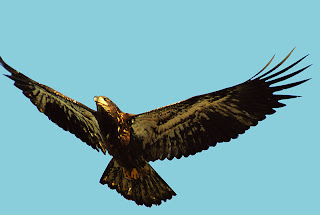No, they're not the folks at White Memorial (contrary to popular belief), nor do they live in underwater cities on the planet of Naboo. They look harmless, even pleasant, and many of us pass by them without giving it a second thought.
These embryophytic, photosynethetic marauders are altering our ecosystems as we have never seen before. However, these aliens are now being exposed.
For the past few months, we have been collecting, pressing and preserving samples of invasive alien plants. Barberry, Multiflora Rose, and Morrow's Honeysuckle have been taking over the understories of our forests since their introduction from foreign shores. These species, however, are just the tip of the iceberg. The State of Connecticut lists 96 species of invasive or potentially invasive plants in our area. Some, like the Autumn Olive, are widespread and well-known. Many others, such as the Rugosa Rose, have a limited distribution in the State.
 |
| Morrow's Honeysuckle |
Much to our surprise, we have already collected samples of 40% of the invasive species on this list. There are at least five other species we know about on the property but haven't collected, and potentially several other invasives that we haven't yet documented on the property. Water chestnut, for example, used to be found in Bantam Lake, but thanks to eradication efforts, we were unable to collect any samples of this invasive.
Why are we going through the trouble of collecting all these samples? These specimens will be sent to the University of Connecticut herbarium so other scientists can get a better picture of where these invasives are and how we can manage them. Even though these species seem to pop up everywhere, we have surprisingly few records of invasives in Connecticut. In fact, many of the specimens we do have were collected decades ago and do not necessarily reflect their distribution in Connecticut.
Below is a list of the invasive plant species found in Connecticut. We have specimens of the species listed in plain font, but no specimens of those in bold. You can also learn more about invasive species at White Memorial by visiting our Encyclopedia of Life page.














